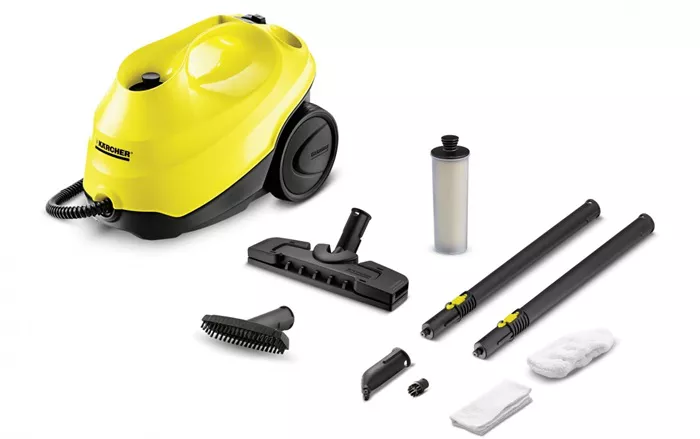Wet mopping is a popular cleaning method used to maintain cleanliness in homes and commercial spaces. It involves using a mop soaked in water or a cleaning solution to remove dirt, stains, and bacteria from floors. This technique is especially effective for deep cleaning and sanitizing various floor surfaces.
Understanding Wet Mopping
Wet mopping is a cleaning process that utilizes a damp mop to clean floors. The mop is typically soaked in a mixture of water and a suitable cleaning solution, then wrung out to ensure it’s not dripping wet. This method helps in loosening and removing stubborn dirt, grime, and spills that dry mopping might miss.
How Wet Mopping Works
When performing wet mopping, the cleaning solution applied to the floor helps to break down dirt and stains. The mop head absorbs the loosened debris, leaving the floor cleaner. It’s essential to regularly rinse and wring out the mop to prevent spreading dirt around.
Best Surfaces for Wet Mopping
Wet mopping is suitable for various floor types, including:
- Tile Floors: Ceramic, porcelain, and other tiled surfaces benefit from wet mopping, as it effectively cleans grout lines and tile surfaces.
- Vinyl Floors: These floors can handle wet mopping, but it’s crucial to avoid excessive water to prevent damage.
- Concrete Floors: Ideal for wet mopping, especially in garages or basements, to remove oil stains and dirt.
However, it’s advisable to avoid wet mopping on:
- Hardwood Floors: Excessive moisture can cause warping and damage to wood surfaces.
- Laminate Floors: Similar to hardwood, laminate can be damaged by excess water.
Types of Wet Mops
There are several types of wet mops available, each designed for specific cleaning needs:
- Sponge Mops: These mops have a sponge head that absorbs water and cleaning solution, making them suitable for smooth, non-textured floors.
- Cotton Mops: Traditional mops with cotton strands, effective for general cleaning tasks.
- Microfiber Mops: Known for their superior cleaning ability, microfiber mops trap dirt and bacteria more effectively than other types.
- Spin Mops: Feature a spinning mechanism to wring out excess water, reducing the risk of over-wetting floors.
- Steam Mops: Utilize steam to clean and sanitize floors without the need for chemical cleaning solutions.
Choosing the Right Mop
Selecting the appropriate mop depends on your specific cleaning requirements:
- For Deep Cleaning: Steam mops are effective in sanitizing floors without chemicals.
- For General Cleaning: Microfiber or cotton mops are versatile and suitable for most floor types.
- For Large Areas: Spin mops can cover more ground efficiently, saving time and effort.
Benefits of Wet Mopping
Wet mopping offers several advantages:
- Effective Dirt Removal: The combination of water and cleaning solution helps to loosen and remove stubborn dirt and stains.
- Sanitization: Wet mopping can kill bacteria and germs, promoting a healthier environment.
- Improved Floor Appearance: Regular wet mopping restores shine and maintains the aesthetic appeal of floors.
Proper Wet Mopping Technique
To achieve optimal results, follow these steps when wet mopping:
- Preparation: Sweep or vacuum the floor to remove loose dirt and debris.
- Mix Cleaning Solution: Prepare a bucket with warm water and an appropriate cleaning solution.
- Soak and Wring Mop: Dip the mop into the solution, then wring it out to ensure it’s damp, not soaking wet.
- Mop the Floor: Start in a corner and mop in a figure-eight or ‘S’ pattern, working your way towards the exit.
- Rinse Mop Regularly: Periodically rinse and wring out the mop to prevent spreading dirt.
- Dry the Floor: Allow the floor to air dry or use a clean, dry mop to speed up the drying process.
Common Mistakes to Avoid
To ensure effective wet mopping, avoid these common errors:
- Using Excessive Water: Too much water can damage certain floor types and leave streaks.
- Not Rinsing the Mop: Using a dirty mop can spread dirt around instead of cleaning it.
- Using Harsh Chemicals: Some cleaning solutions can damage floors; always use products recommended for your floor type.
- Not Drying the Floor: Walking on a wet floor can be slippery and may cause accidents.
Maintaining Your Mop
Proper maintenance of your mop ensures its longevity and effectiveness:
- Regular Cleaning: Wash mop heads after each use to remove dirt and bacteria.
- Drying: Allow mop heads to dry completely to prevent mold and mildew growth.
- Replacement: Replace mop heads when they become worn or damaged to maintain cleaning efficiency.
Conclusion
Wet mopping is an essential cleaning method that helps maintain cleanliness and hygiene in various environments. By understanding the process, selecting the right mop, and following proper techniques, you can achieve effective and efficient cleaning results. Remember to consider your specific floor type and cleaning needs when choosing cleaning tools and solutions.
Related topic:

